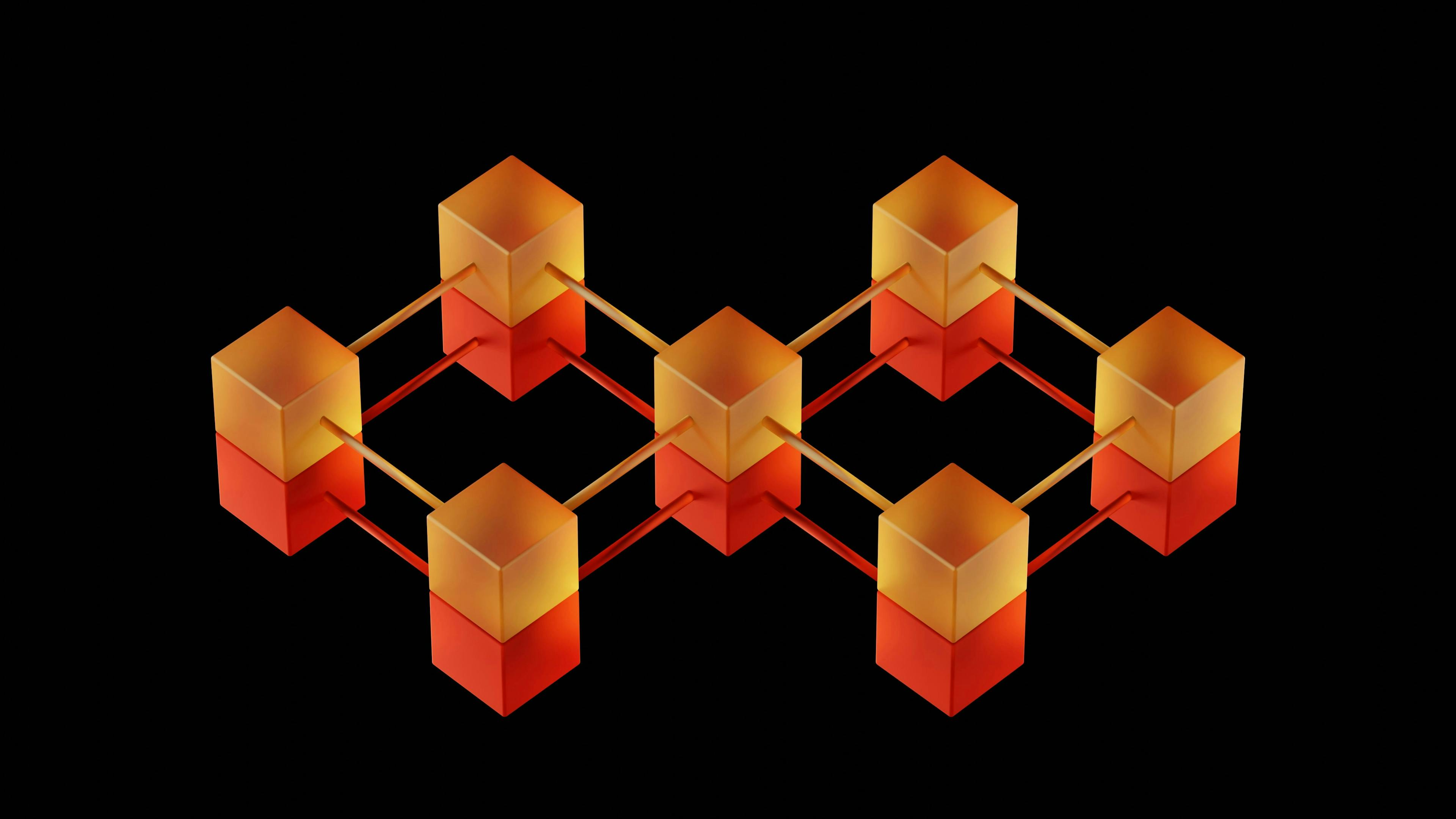Decentralised Applications (dApps): How They Are Changing the Internet Landscape
The internet has undergone significant transformations since its inception, evolving from static web pages to dynamic platforms that facilitate global communication and commerce. Today, we stand on the cusp of another major shift, driven by the emergence of decentralised applications, or dApps. These applications, built on blockchain technology, are poised to redefine how we interact online by offering enhanced security, transparency, and user autonomy. This article delves into the world of dApps, exploring their origins, impact, challenges, and the future they herald for the internet landscape.

Understanding Decentralised Applications (dApps)
Decentralised applications, or dApps, are software programs that run on a network of computers rather than a single central server. Unlike traditional applications, which rely on centralised databases and servers controlled by a single entity, dApps operate on blockchain networks, leveraging the distributed nature of these ledgers to provide services. This decentralisation ensures that no single point of failure or control exists, enhancing the application's resilience and trustworthiness.
At their core, dApps utilise smart contracts—self-executing agreements coded into the blockchain that automatically enforce rules and terms without the need for intermediaries. These smart contracts enable dApps to function autonomously, executing transactions and operations when predefined conditions are met. This capability opens up a realm of possibilities for creating applications that are transparent, secure, and resistant to censorship.
The Genesis of dApps
The concept of decentralised applications gained momentum with the advent of blockchain technology, particularly after the introduction of Bitcoin in 2009. Bitcoin demonstrated the potential of a decentralised ledger to facilitate peer-to-peer transactions without the need for a central authority. However, it was the launch of Ethereum in 2015 that truly unlocked the potential of dApps.
Ethereum introduced a platform that not only supported a cryptocurrency but also allowed developers to build and deploy smart contracts and decentralised applications. This innovation provided the tools necessary for creating a wide array of dApps across various industries, from finance and gaming to supply chain and social media.
How dApps Are Changing the Internet Landscape
Empowering User Autonomy
One of the most significant impacts of dApps is the shift of control from centralised entities to individual users. In traditional applications, users often relinquish control over their data and digital assets to companies that may exploit this information for profit. dApps, however, enable users to retain ownership of their data, deciding how and when it is shared or used. This empowerment fosters a more equitable digital environment where users have a say in the governance and evolution of the platforms they use.
Enhancing Security and Trust
Security breaches and data leaks are prevalent concerns in the centralised internet model. Since dApps operate on blockchain networks, they inherit the inherent security features of these platforms. The decentralised nature of blockchains makes them resistant to hacking attempts that typically target central points of failure. Additionally, the use of cryptographic algorithms ensures that transactions and data storage are secure.
Transparency is another critical aspect of dApps. All transactions and changes are recorded on an immutable ledger accessible to all network participants. This transparency builds trust among users, as operations can be audited and verified independently, reducing the potential for fraud or manipulation.
Introducing New Economic Models
dApps have given rise to innovative economic models through the tokenisation of assets and services. By incorporating tokens—digital assets that can represent value or utility—dApps can create self-sustaining ecosystems where users are incentivised to participate actively. For example, users might earn tokens for contributing content, validating transactions, or providing other services within the network. These tokens can often be traded or used within the application, fostering an economy that benefits both the users and the platform.
This model challenges traditional revenue structures, particularly in sectors like social media, where user-generated content drives value. Instead of platforms profiting solely from advertising revenue, dApps can distribute rewards directly to users, aligning incentives and promoting more meaningful engagement.
Fostering Decentralised Finance (DeFi)
Perhaps one of the most transformative applications of dApps is in the realm of decentralised finance, or DeFi. DeFi dApps offer financial services such as lending, borrowing, trading, and earning interest without the need for traditional banks or financial institutions. By eliminating intermediaries, these applications reduce costs, increase accessibility, and enable more transparent and efficient financial transactions.
Platforms like Uniswap and Compound exemplify how dApps facilitate peer-to-peer financial interactions. Users can trade cryptocurrencies directly with one another or earn interest on their assets by providing liquidity to the market. This democratization of finance opens up opportunities for individuals who may have been excluded from traditional financial systems due to geographic, economic, or regulatory barriers.
Revolutionising Industries Beyond Finance
The influence of dApps extends beyond finance into various industries:
Supply Chain Management
DApps can track goods throughout the supply chain, providing transparency and reducing fraud. Companies like VeChain use blockchain to verify product authenticity and improve logistics efficiency.
Healthcare
Decentralised applications enable secure sharing of medical records among authorised parties, enhancing patient privacy and care coordination. Patients can control access to their data, ensuring it is used ethically and securely.
Gaming and Digital Collectibles
DApps have introduced the concept of true ownership of digital assets through non-fungible tokens (NFTs). Games like CryptoKitties allow users to own, trade, and sell unique digital items, creating new markets and revenue streams.
Social Media and Content Platforms Decentralised social networks like Steemit and Minds reward users for creating and curating content. This model challenges traditional platforms by prioritising user engagement and value creation over advertising revenue.
Voting and Governance
DApps can facilitate secure, transparent voting systems, enhancing the integrity of elections and organisational decision-making processes.

Challenges Facing dApps
Despite their potential, dApps face several challenges that hinder widespread adoption:
Scalability Issues
Blockchain networks, particularly those relying on proof-of-work consensus mechanisms like Ethereum (prior to its transition to proof-of-stake), face scalability limitations. High network usage can lead to congestion, slow transaction times, and increased fees, negatively impacting the user experience.
User Experience and Accessibility
The complexity of blockchain technology can be a barrier for mainstream users. Interacting with dApps often requires a basic understanding of cryptocurrencies, wallets, and private keys. User interfaces may not be as polished or intuitive as those of traditional applications, making it difficult for non-technical users to engage effectively.
Regulatory Uncertainty
The regulatory landscape for blockchain and cryptocurrencies is still evolving. Governments worldwide are grappling with how to classify and regulate these technologies. This uncertainty can deter investment and development, as businesses may be hesitant to engage in activities that could later face legal challenges.
Security Concerns
While blockchain networks are inherently secure, smart contracts can contain vulnerabilities if not properly coded and audited. Hacks and exploits targeting dApps have resulted in significant financial losses, undermining trust in these platforms.
Interoperability
The lack of standardisation and interoperability between different blockchain networks can limit the functionality of dApps. Users may find it challenging to transfer assets or data between platforms, hindering the seamless experience that centralised applications offer.
The Future of dApps and the Internet
The trajectory of dApps suggests a gradual but significant shift toward a more decentralised internet. Several developments are poised to address current challenges and propel dApps into mainstream adoption:
Advancements in Blockchain Technology
Technological innovations such as Ethereum 2.0 aim to improve scalability and reduce energy consumption through proof-of-stake consensus mechanisms and sharding. Layer 2 solutions, like sidechains and state channels, offload transactions from the main blockchain, alleviating congestion and lowering fees.
Improved User Interfaces
Developers are increasingly focusing on enhancing the user experience of dApps. Simplified interfaces, seamless wallet integrations, and educational resources can make dApps more accessible to a broader audience.
Regulatory Clarity
As governments develop clearer regulations surrounding blockchain and cryptocurrencies, businesses and users can navigate the legal landscape with greater confidence. This clarity can encourage investment and innovation in the dApp ecosystem.
Cross-Chain Interoperability
Projects like Polkadot and Cosmos are working on creating interoperability between different blockchain networks. This development can enable dApps to leverage the strengths of multiple platforms, providing more robust and versatile applications.
Integration with Traditional Systems
As dApps mature, integration with traditional systems and services becomes more feasible. Hybrid models that combine decentralised and centralised elements can offer the best of both worlds, catering to a wider range of users and use cases.
Conclusion
Decentralised applications are more than just a technological advancement; they represent a fundamental shift in how we conceive and utilise the internet. By decentralising control, enhancing security, and fostering new economic models, dApps have the potential to create a more open, equitable, and resilient digital ecosystem.
While challenges remain, the continuous evolution of blockchain technology and growing interest from both the public and private sectors signal a promising future for dApps. As we move towards this decentralised internet, collaboration, innovation, and a user-centric approach will be key to unlocking the full potential of this paradigm shift.
Interested in exploring how decentralised applications can benefit your business or project? Contact Mighty Labs today to discover how we can help you harness the potential of dApps and navigate the future of the internet.
Ready to have a conversation?
Book a call with us